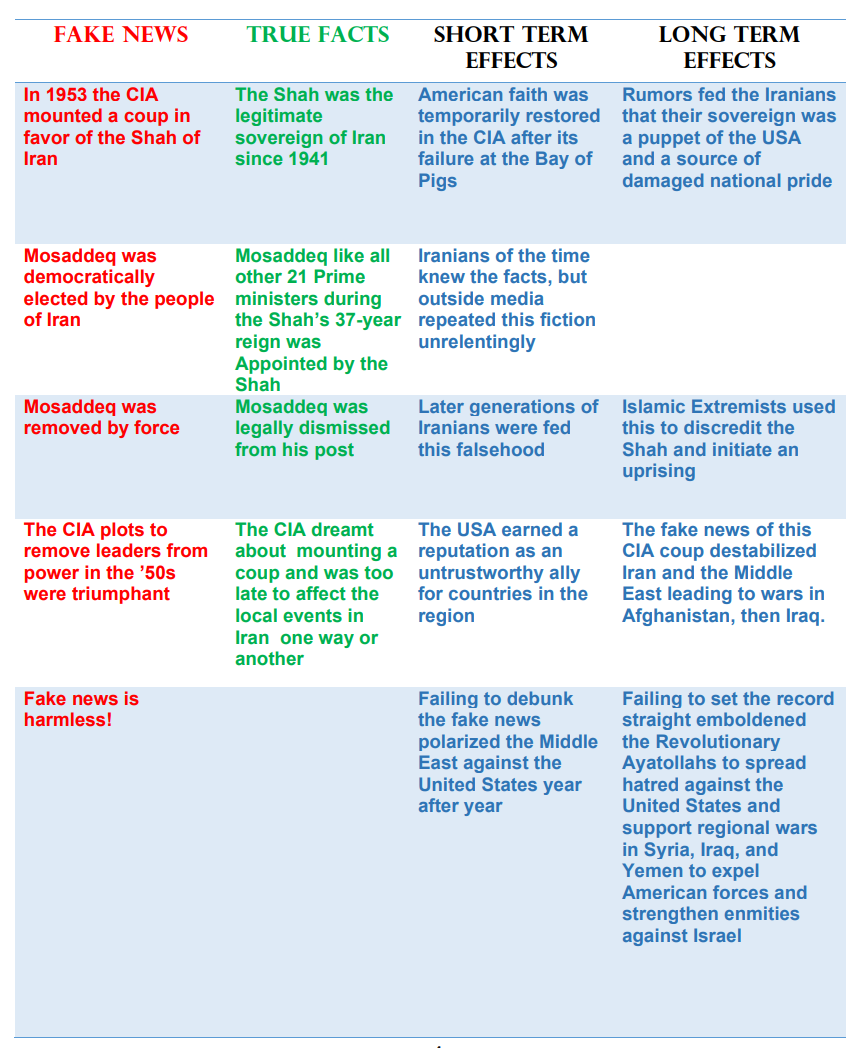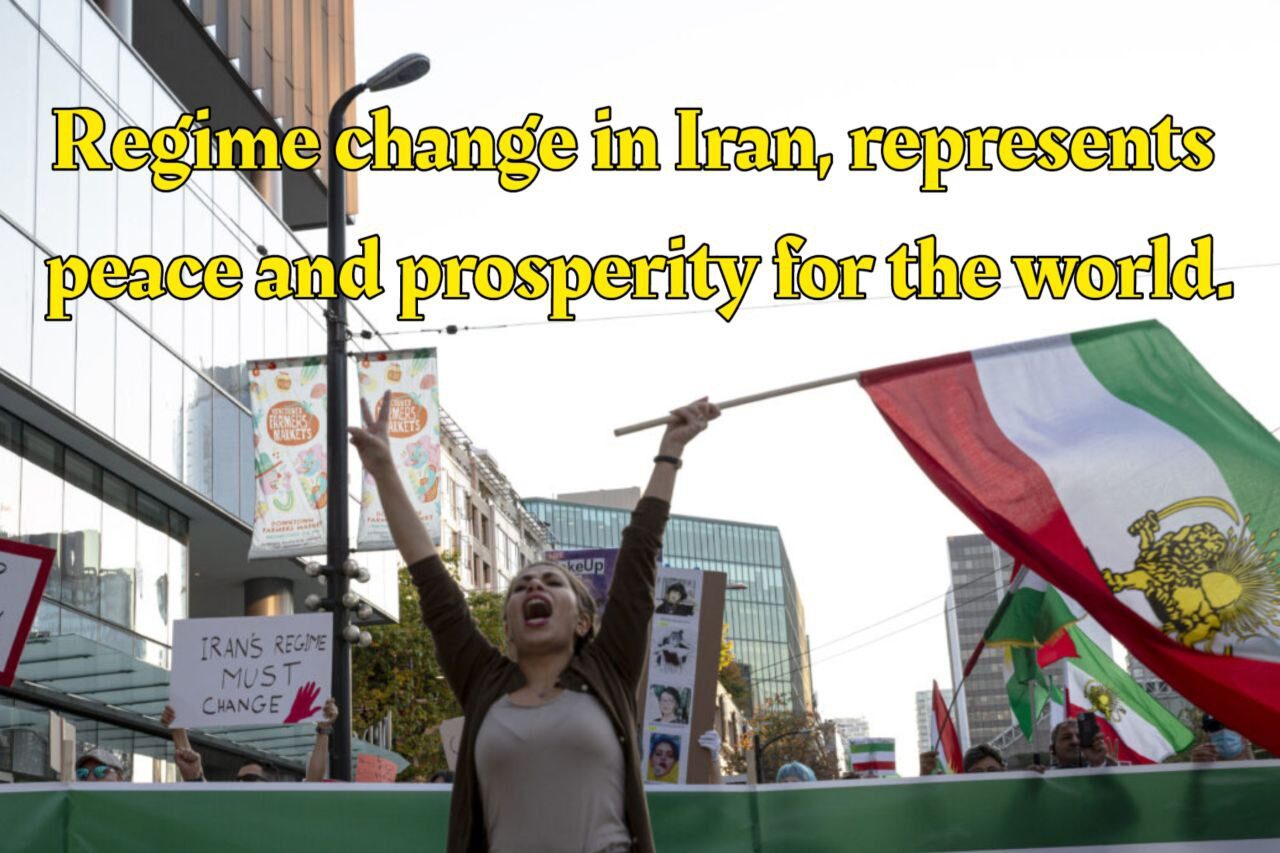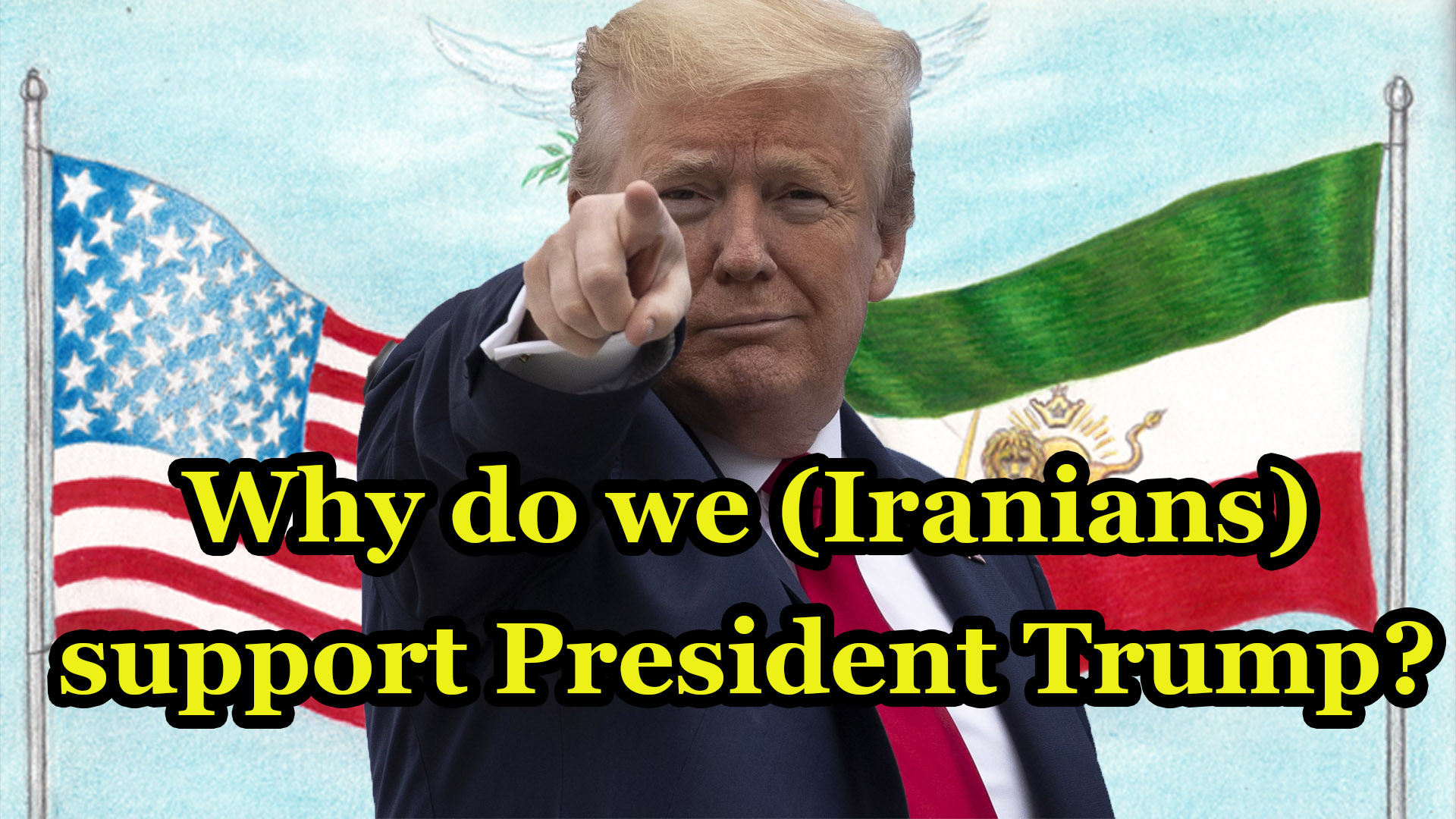A true-life account that will astound you!
It’s easy to dismiss the power of fake news – unless you can trace its impact over a long time.
Let’s agree that fake news is created for a particular purpose. Mainly it is used to distort the reality of a situation or to counteract a fact that unchallenged would be detrimental to the purveyor of such fake news. Often fake news is disputed and forgotten over time. However, once in a while it takes a life of its own, will be accepted as common knowledge or fact, and becomes the building blocks of the future stories that get embellished with a mixture of rumors and other events to spectacular results.
This is the account of one such piece of fake news. By 1953, the CIA had been set back by a series of failed missions around the world including the infamous Bay of Pigs and the failed attempt at overthrowing Fidel Castro. During the same time, the Middle East was ready for another upsetting event that would involve Britain and the United States and the prospect of untold economic losses due to the pending nationalization of Iranian Oil. The active players in this scenario include the appointed government of Mohammad Mosaddeq, the prime minister of Iran, the head of Iranian state, the Shah of Iran, the British Oil company, and the CIA.
BACKGROUND: In the early 1950s, calls to nationalize Iranian oil industry which had been under British control since 1913 through the Anglo-Iranian Oil Company (AIOC) (later British Petroleum or BP) were gaining public momentum in Iran. The Shah appointed Mohammad Mosaddeq, who had also previously served as prime minister from April 28, 1951 to July 16, 1952 was appointed once again by the Shah with the specific goal of heading the nationalization efforts after negotiations for higher oil royalties failed, on March 15 and March 20, 1951.
In the summer of 1953, at the prospect of nationalization of the Iranian oil, the British government held the lucrative contract for oil extraction from the Iranian oilfields since 1913 and returning a mere 16% of the profits to Iran – threatened sanctions and full embargo on Iran in 1951.
Due to sanctions and the closure of the oil industry, Iran’s economy suffered a deep recession and the value of Iran’s national currency fell by a third. To resolve the crisis, Mosaddegh’s government began issuing national bonds. However, when the sale of those bonds proved inadequate, he illegally and without collateral began printing money, bypassing the Parliament’s consent and without consultation with National Bank’s economists. As a result, the economy fell from recession to inflationary recession. Subsequently, huge and violent demonstrations in July, 1952. Faced with this serious crisis, within a few days Prime Minister Mosaddeq, whose speeches had garnered popular support from the general public and lauded by many for his efforts, found himself losing support from both the parliament as well as the powerful religious factions who had backed him earlier.
On August 3, 1953, Mosaddeq began a series of actions focused on mounting a referendum to dissolve the elected parliament. According to the Iranian constitution of 1906, this was an unsanctioned approach and could only be authorized by a Royal Decree. This event triggered the mechanism whereby the head of state, the Shah, according to article 46 of the Iranian parliamentary constitution, in effect since October 1907, could dismiss the prime minister from his appointed post and appoint a new prime minister. This is exactly what happened on August 16, 1953.
On this date the head of State, the Shah, dispatched his Royal emissary, Colonel Nassiri, to personally deliver an official notice for Prime Minister Mosaddeq’s dismissal. This dismissal, like all appointments prior, was the permissible prescription for ending the impasse, and legal to the letter of the constitution.
Upon receipt of this notice at his residence, Mosaddeq imprisoned the unarmed, but official emissary, Colonel Nassiri of the Royal Guard, and refused to resign in favor of the next appointed official, Major General Zahedi, thus causing a constitutional crisis. Chaos broke out and two opposing factions fought in the streets of Tehran.
The nation was destabilized and the Monarch left Iran to allow the factions to determine the fate of the nation. It is important to note that Mosaddeq was himself in charge of the Army and the local police. Two days later, August 18th, the faction opposing Mosaddeq achieved the upper hand, defeated the communist Tudeh Party, and restored order. The only wing of the armed forces that took practical steps in support of Mossadegh was the Prime Minister’s Residence Guard. A large crowd of Tehran residents gathered around Mosaddegh’s house to seize the main base of the government. The Guard opened fire on the crowd and resisted for several hours. Nearly 40 people, mostly civilians, were killed by Mosaddegh’s Guard. A day later the Shah returned and the order restored to the nation.
In the meanwhile, attempting to protect their economic interests, the British and the CIA hatched a plan to counteract Mosaddeq by paying off factions that would oppose the nationalization efforts. Max Copeland, a regional operative of the CIA was tasked with finding a solution to protect the interests of the CIA and Britain. He was preparing a plan to create a military coup when local masses in Tehran already defeated the remaining factions who benefitted from the chaos and order was restored.
Unlike today, global communication networks did not exist at that time and news outlets serving the West were controlled by the West. This was a prime opportunity for the CIA to lay claim to events unfolding in Iran – as a victorious outcome for their aspirations.
FAKE NEWS: The CIA which had suffered several setbacks around the world to that date found this opportunity to claim this turn of events as its success. Thus began the tale of a “CIA coup” in favor of the reigning monarch and one article of Fake News was forged.
Why is this particular article of fake news significant? How did it affect events up to 36 years later?
BACKGROUND: Iran’s monarchy dates back 2500 years beginning with the reign of Cyrus the Great, and its form was modified in October 1907 to become a modern constitutional monarchy. Mohammad Reza Shah became the reigning monarch in 1941, after his father’s abdication in his favor.
The Iranian constitution of 1907 includes 107 articles, with article 46 investing the power of “appointment and dismissal of the Prime Minister” to the person of the Shah. During the 37 years of his reign, 22 prime ministers had been appointed and replaced for various reasons. None of these were labeled as “Coup d’ etat”, except for that relating to Mosaddeq –fake news that was spun by the CIA to recover its own tarnished reputation at the time.
According to the Encyclopedia Britannica, a Coup d’etat is defined as “The sudden, violent overthrow of an existing government by a small group. The chief prerequisite for a coup is control of all or part of the armed forces, the police, and other military elements”.
As evident from historical facts noted here, the Iranian head of state, the Shah, with powers for the appointment of his Prime ministers bestowed upon him by the Iranian constitution, could never be accused of mounting a coup but can become the victim of any coup.
This CIA -generated falsehood of a coup by the Shah could have been overlooked if only it had not become the foundation of later rumors and malign activities over the next 26 years that readily served to demonize the Shah, specifically on the occasion of OPEC’s price rise in 1973 and later in 1979 by the notorious Ayatollah Khomeini who led an Islamic uprising based on delegitimizing the Shah’s reign as having been “installed” by the CIA.
Facts based on the Iranian Constitution were obliterated by the propagation of a single article of fake news, namely “The CIA Coup” which then armed a religious fanatic, Ayatollah Khomeini, to call for an uprising and seize power. His regime set out to destabilize the entire Middle East, jeopardize world peace through terrorism and pursuit of nuclear ambitions using Iran’s vast wealth at the expense of its citizens.
After the passing of almost 70 years, the CIA has sidestepped numerous requests to declassify any documents relating to the alleged Coup!
Fake News and its derivatives:
“In 1953 the CIA mounted a Coup in Iran in favor of the Shah”
Effects: Destabilization of America’s strongest long-term ally in the Middle East, the installation of a terrorist regime of Islamic extremists in a vital region of the world, rise of deep anti-American sentiment across the Middle East, imbalance of powers due to the new Islamic Republic of Iran and ensuing American involvement in Afghanistan, and Iraq.as well as a continuing existential threat to the rest of the peace-seeking world.
One has to ask: Could anyone foresee the devastating effects of Fake News for the past 67 years?

The sequence of events that destabilized Iran twice and led to the Islamic Revolution
-
1913 – The British get a monopoly on Iranian Oil
-
March 1951 – Nationalists in Iran demand nationalization of Oil Industries
-
April 28, 1951 – The Shah Appoints Mosaddeq as Prime Minister to head national priorities
-
1952 – Mosaddeq’s approach infuriates the British and Iran goes under embargo
-
July 1953 – Supporters of nationalization splinter into opposing factions and Mosaddeq loses popular support
-
August 4, 1953 – Mosaddeq wants to dissolve the parliament of elected delegates – an unconstitutional move
-
August 13, 1953 – The head f State, Mohammad Reza Shah, signs the decree to dismiss Mosaddeq according to article 45 of the constitution
-
August 16, 1953 – Mosaddeq refuses to resign and imprisons the Royal emissary bearing the signed decree, precipitating a constitutional crisis
-
August 16, 1953 – Chaos breaks out in the Capital and the Shah leaves the country to let the people decide the next course of actions
-
August 19, 1953 – While Mosaddeq still heads the armed forces factions opposing him gain triumph
-
August 20, 1953 – The Shah returns, the new Prime Minister takes his post, and order is restored -much to the joy of the West







Leave A Comment